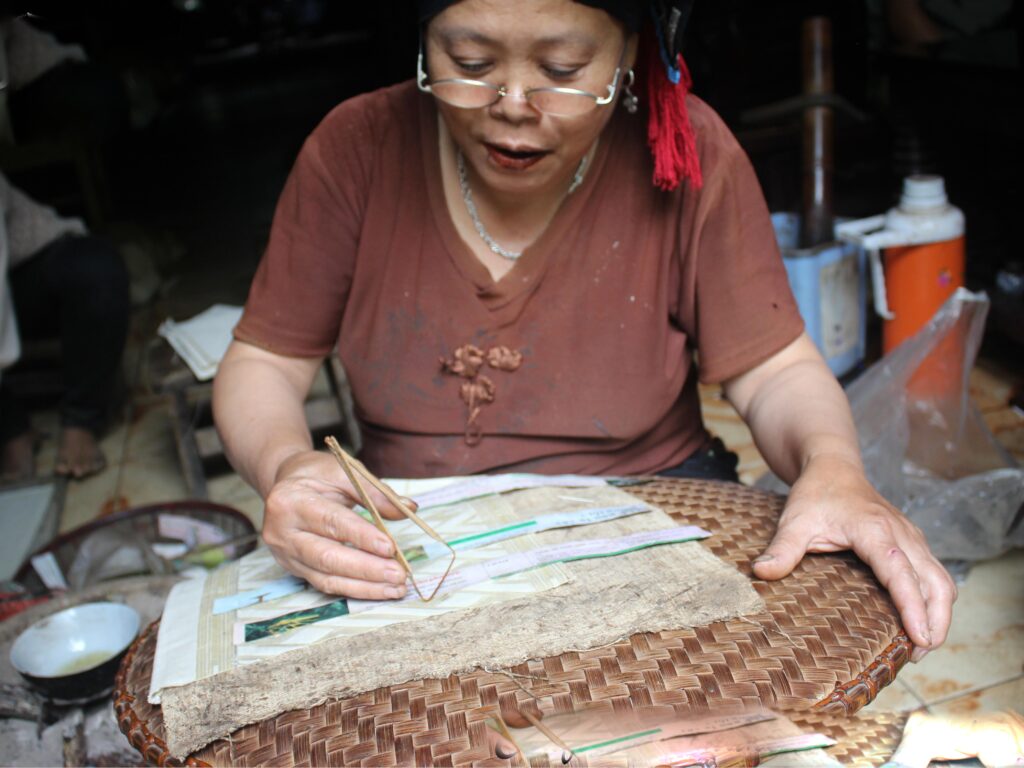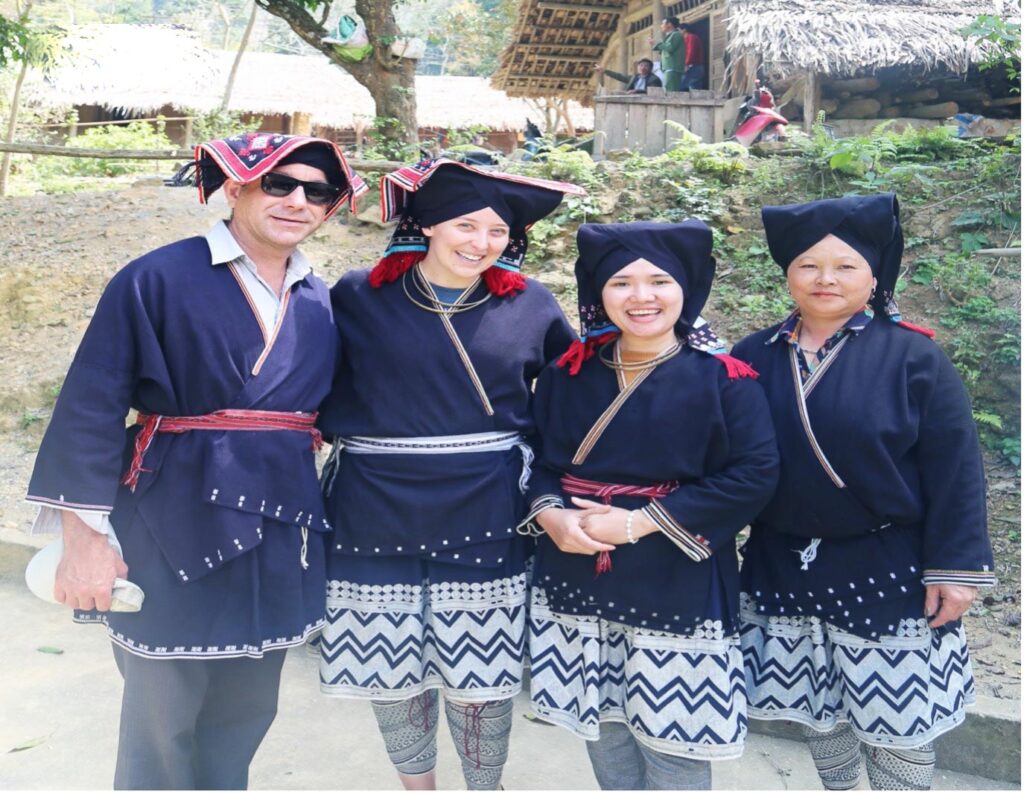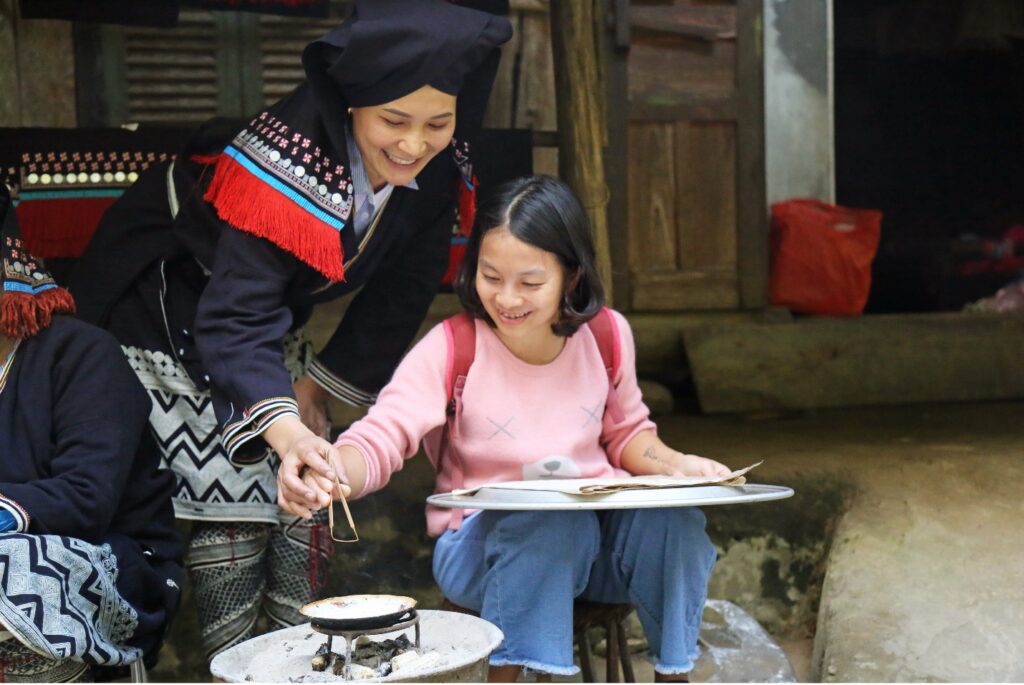“The art of our village has reached so many corners of the world.” – Ms. Ly Thi Nhat replied joyously upon asking why she does what she does. Hidden within the valleys of the Annamese Mountains is the region of Da Bac of Vietnam, where Ms. Nhat lives in Sung Village. The lady with infectious energy and passion for her art. The indigenous art of Brocade dates back to the 18th century and Ms. Nhat and her team of 7 women have not just kept it alive, but it is flourishing!
The Deep Blue of Indigo
Ms. Nhat explains enthusiastically, “It is purely a natural and environmentally friendly method that our ancestors taught us. For the natural dyeing process, we collect locally grown indigo leaves and soak them for three days to extract the deep blue colour.” She explains it is a long process but worth doing it. While the leaves are soaking, her team, smashed charcoal is pressed into a cone made of bamboo and palm leaf, and water is poured over the top to produce a charcoal solution, which then is combined with the indigo mixture. Ms. Nhat adds, ‘”The most important factor for the color is adding limestone in the indigo water, in the right amount.” Well, that ‘right amount’ is something only an expert like her can manage.


Once the dye is prepared, the actual dyeing process starts. The trick here is, using another natural product – Beewax! To create the intricate blue and white patterns on the garments, Ms. Nhat applies beeswax using small bamboo tools. These parts where the wax is applied on the garment will then remain undyed – white in colour. Dyeing is Ms. Nhat’s favorite part of the process. She says, “It is the most exciting part. I want to do it as many times per day as possible. I try to do three times soaking and drying per day. When the color forms, I feel love for my work.”
Once the fabric has been dyed, Ms. Nhat soaks the cloth in warm water to remove the beeswax. The fabric can then be hand-stitched with thread and beads. The blue beads are a good indication of the quality of the product. The more expensive the beads, the higher the financial standing of the household.


The Artistic Legacy Lives On!


“I make 10 headpieces, three jackets, and 20 skirts every year. People from different continents come and see me doing my work with so much interest! Now, I have started making scarves for them. They love it.” Ms. Nhat proudly shares that her art is globally appreciated. She has passed on this legacy to her daughter-in-law along with many other young girls and boys in the village. She shares, “I have seen a lot of changes that CBT (Community Based Tourism) brought us to our village aside from income growth. Young people like to follow their elders to dye fabrics and preserve the culture. They can see that outsiders are valuing it.”


This is the result when the artist believed in her art and shared it with the world, in its most authentic form! Art became the connection for the world to come closer, appreciate nature, traditions and carry it forward.

